
Ocean covers 80 per cent of the Southern Hemisphere.
We have so much ocean exploration to do to find out what mysteries lie below.
We have only explored around five per cent of oceans. That’s a tiny amount. Just let that sink in for a minute.
Astronomers have totally been nailing it in terms of locating half the Universe. And yet, the deep blue ocean right here on Earth remains one of the most under-explored places known to humans. So why are our oceans still a mystery? Well, let’s just say, it’s not from lack of trying!
Our ocean technology has been at the forefront helping the astronomers-of-the-sea answer the age-old question. What exactly is down there? Looking back at historical oceanic technology, the modern-day ocean tech barely resembles their older counterparts. Let’s peek into the oceanic archives at our ‘glow ups’.
Then: towed bodies surveying the ocean
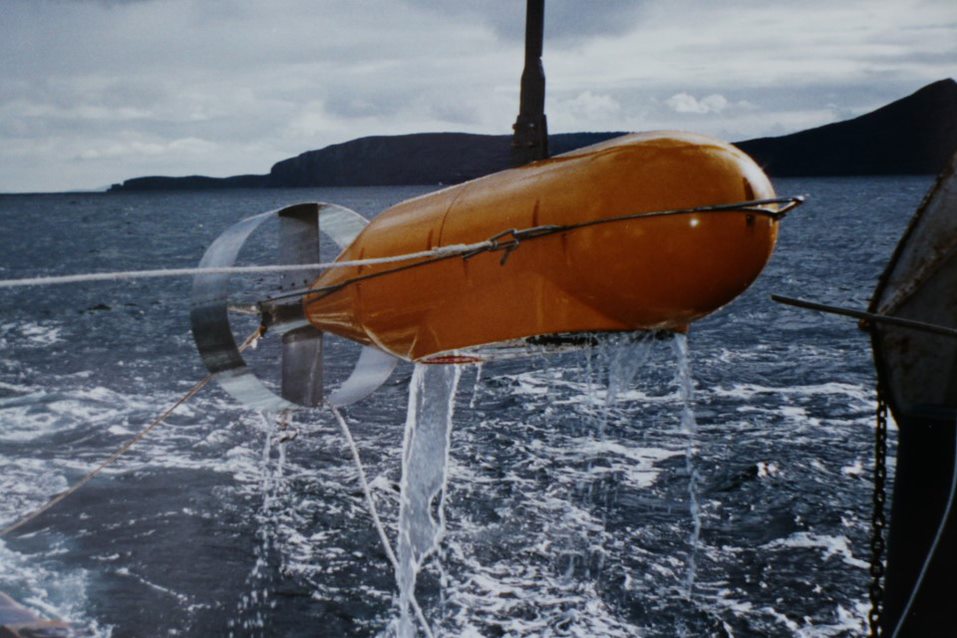
The towed body was designed to help determine stock numbers and whether they were in recovery or decline. It transmitted and received on four different frequencies simultaneously.
We’ve all heard the expression, ‘plenty of fish in the sea’. But how many fishes are there exactly? In the 90s, one of our scientists developed a ‘towed body’ tool to find out.
It was first designed to locate critically low stocks of Orange roughy found lurking 700-1400 metres deep. The towed body can quickly estimate the abundance of fish in a designated area. It works by ‘pinging’ fish using acoustic sound energy transmitters and receivers. These are part of the echosounder tech, usually found on the bottom of research ships.
They’re attached by a cable to the ship, rather than fixed onto the ship itself. Towed bodies allow scientists to get up close and personal to the fishes. They can approximate fish stocks within 200 metres at depths of 1 kilometre.
Back then, towed bodies had to be attached via winches to research ships or large commercial trawlers. Like many other technological grievances of the 90s, (dial up internet anyone?) it had some challenges. Deploying a commercial trawler meant the ship wasn’t catching fish at the same time . They would have to send another commercial trawler, alongside to trawl and catch fish. Not terribly efficient.
In rough weather, the heaving motion of the vessel could transfer to the towed body. Aside from an extra dose of sea sickness (no thanks!), this degraded the quality of the data collected.
Now: acoustic optical system

Our first generation Acoustic Optical System has been deployed on multiple Investigator voyages and combines both acoustics and cameras.
The latest generation of acoustic fisheries assessment tools easier to deploy and operate. These tools have become known as the ‘acoustic optical system’. This allows for deployment from a trawl net which saves time and fuel because it’s one commercial vessel instead of two.
Then: fish on film
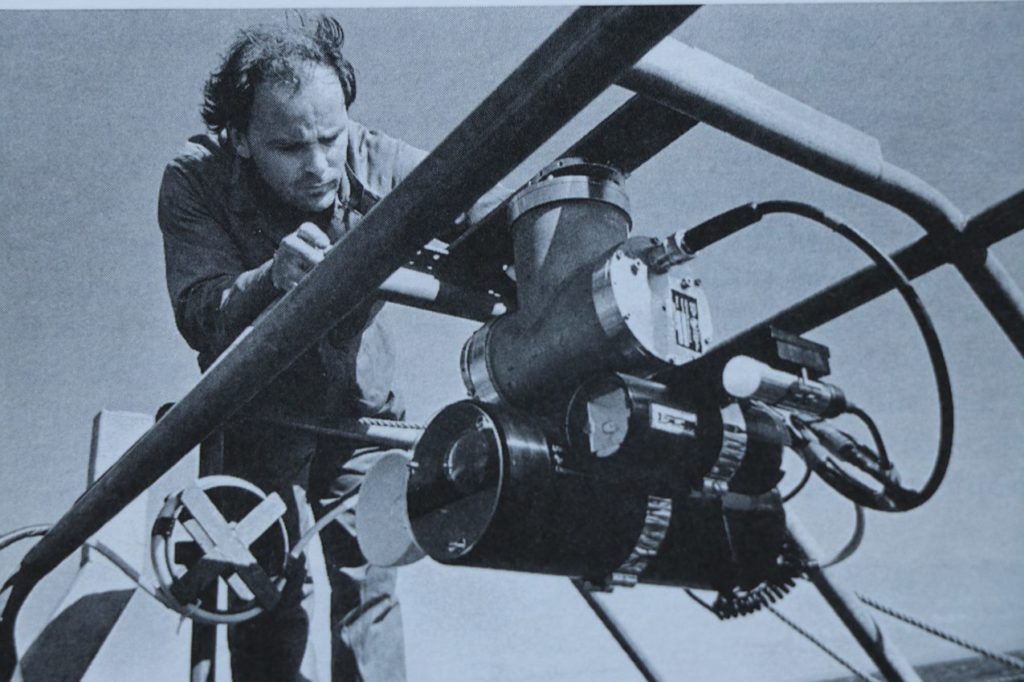
Researchers used a cable connected video system for shallow operations for Derwent estuary scallop studies. (circa mid-late 80s)
While divers have been using undersea cameras since the 40s, early technology relied on a bit of hand-holding. And by this we mean the diver had to physically hold the camera for it to work. We’ve been using camera systems allowing us to go beyond depths accessible to humans. we first did this to help scientists with research into Derwent estuary scallops.
Camera tech has come a long way!
Back in the 80s, if you wanted to find out what lied beneath, there were only two options. A cable-connected video system with underwater lights along with a live video feed of up to 100 metres. Or a commercial stills camera deployed in ‘drop-camera mode’ to depths of up to 1500 metres. The camera would use a spool of slide film which would capture hundreds of shots. And you’d get to develop the film yourself in a dark room on board the ship – fun!
Now: it’s so digital
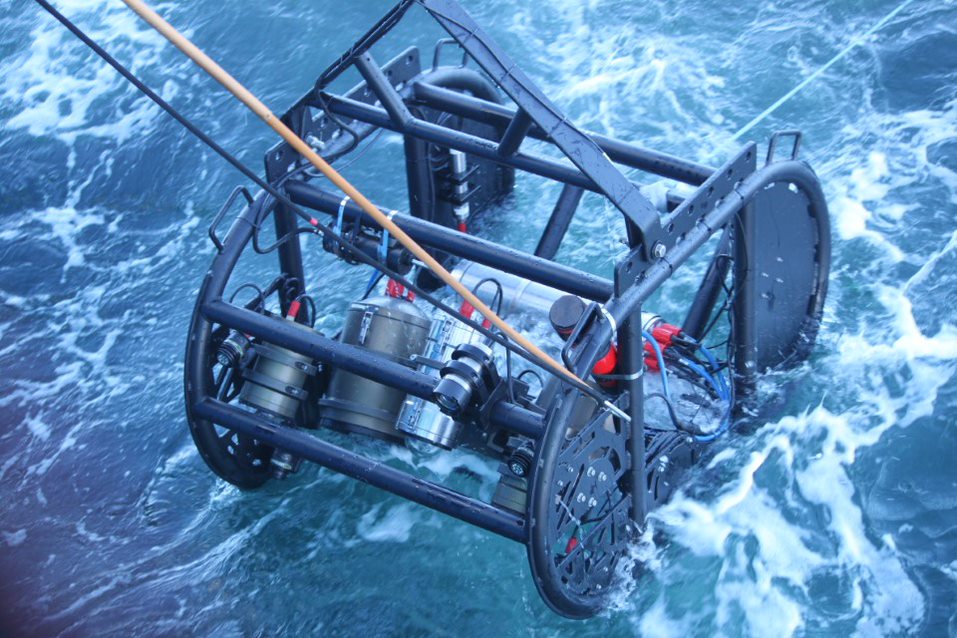
Modern day ocean exploration: The deep towed camera today has still image and HD video cameras capable of taking high resolution imagery of the sea floor.
Our current Deep Towed Camera platforms deliver 1080 HD – soon 4K – vision at depths of up to 6 km.
What triggered this development? In the 90s onboard the Southern Surveyor, a tow-cable operated camera lost contact with the ship. It was in challenging terrain in the far north west of Australia when its ‘umbilical’ was damaged.
This prompted a ‘design rethink’ which led to the next generation of deep towed cameras being developed.
Then: temperature checks
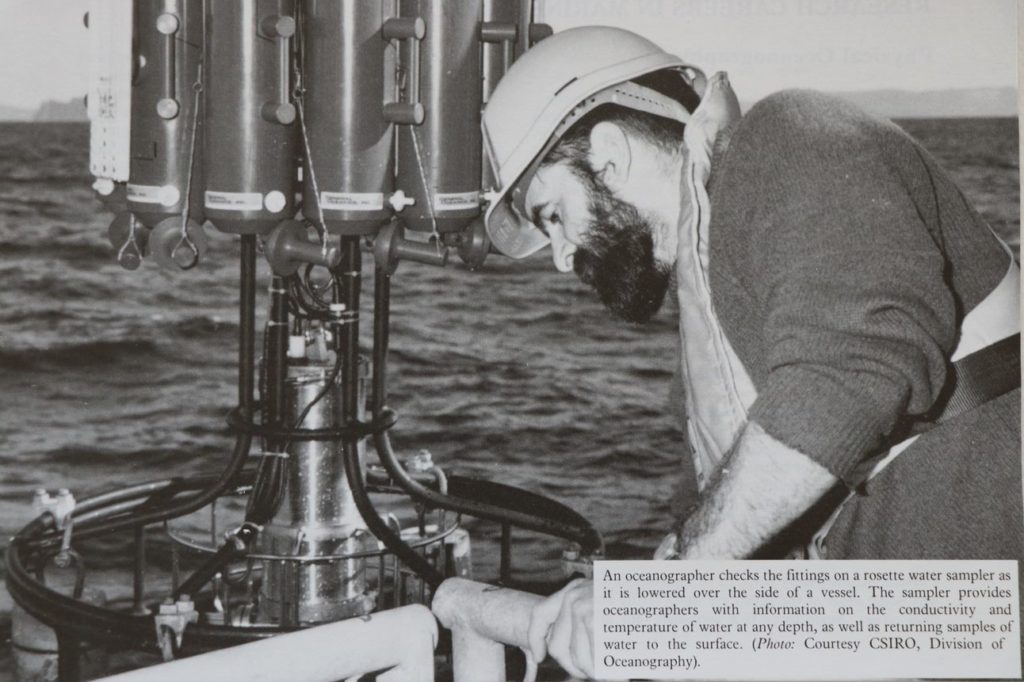
Early CTDs were able to read temperature and salinity through sampling bottles like today, but you’d need to head to the lab after retrieval to analyse the readings.
In the 50s and 60s, scientists would measure ocean temperature and salinity by attaching reversing thermometers to water sampling bottles. These bottles were set at specific intervals along a wire. They would mechanically close to take a water sample triggered by a falling weight on the wire. Once retrieved, the temperatures were read and samples were analysed back at the lab for salinity.
In the 70s, one of our former scientists Neil Brown was working in the US. He developed a better way, using a CTD.
Conductivity, temperature, depth or CTD instruments are the bread and butter of oceanographic research. But obtaining accurate readings over a large area was not so easy.
It was attached to the ship via an electrical cable with which it was lowered. Not surprisingly, most oceanographic ships in the 80s and 90s got on board using the Neil Brown CTD tech on voyages. It was capable of being deployed to depths of up to 6 kilometres. So, there was no excuse not to have one onboard when it was able to measure almost all ocean depths in the world.
Now: pass the remote
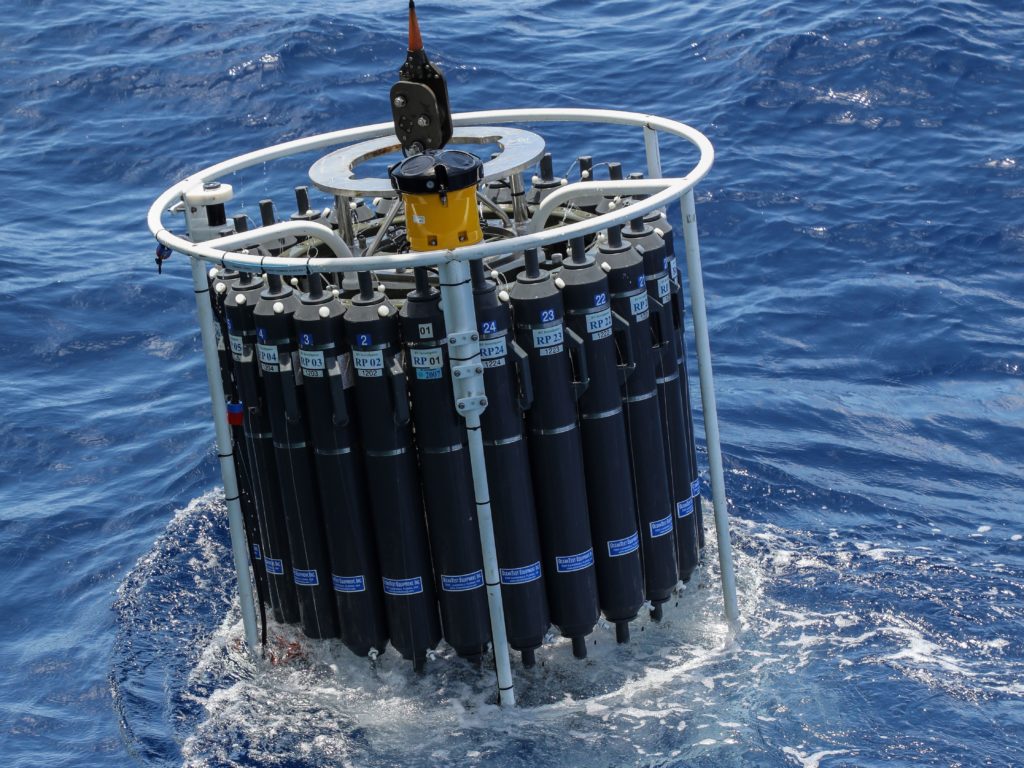
New CTDs are more accurate than ever – able to measure temperature with accuracy better than 2 thousandths of a degree Celsius, salinity to better than 3 thousandths of a PSU (Practical Salinity Units) and depth better than 1 metre to full ocean depth (10 km).
The Seabird Inc Model 911 is widely used by oceanographic vessels worldwide (including our RV Investigator). This includes a frame, CTD instrument, various auxiliary sensors and water sample bottles. Niskin water sample bottles collected water for later analysis. On their way back up to the surface, the bottles can be closed remotely at predetermined depths. This allows scientists to collect water samples at regular intervals throughout the water column.
Modern day CTDs can measure the ocean with incredible precision and accuracy. And up to the full ocean depth of 10 kilometres. This enables critical research into how deep ocean is changing as a result of climate impacts.
As technology continues to advance, so will our ocean exploration. We’re continuing to explore what lies beneath the waves to better manage our oceans and our climate.


5th June 2020 at 3:02 pm
The difference between distant stars and anywhere on Earth is that the first are curiosity, the second are vitally important.